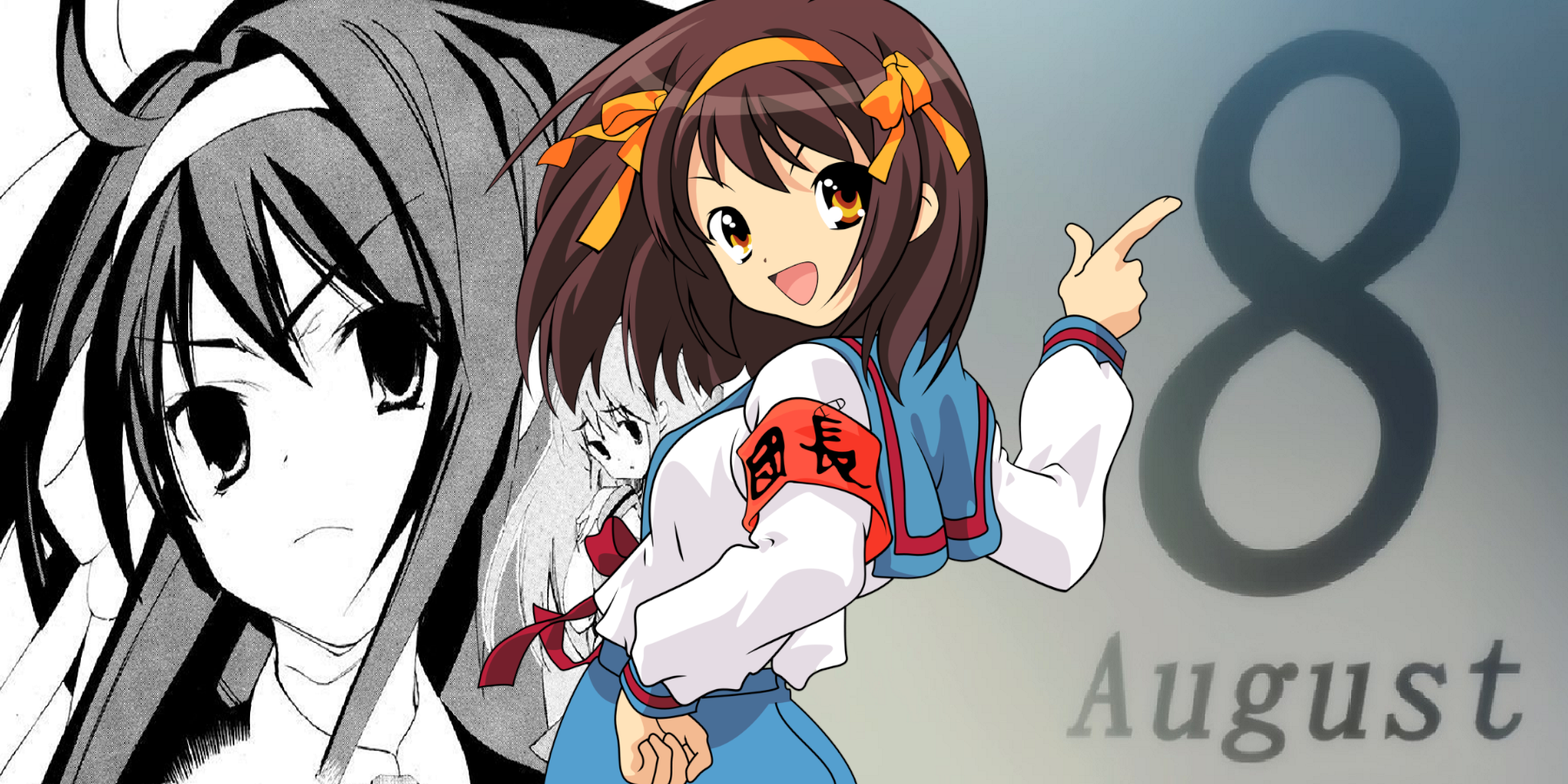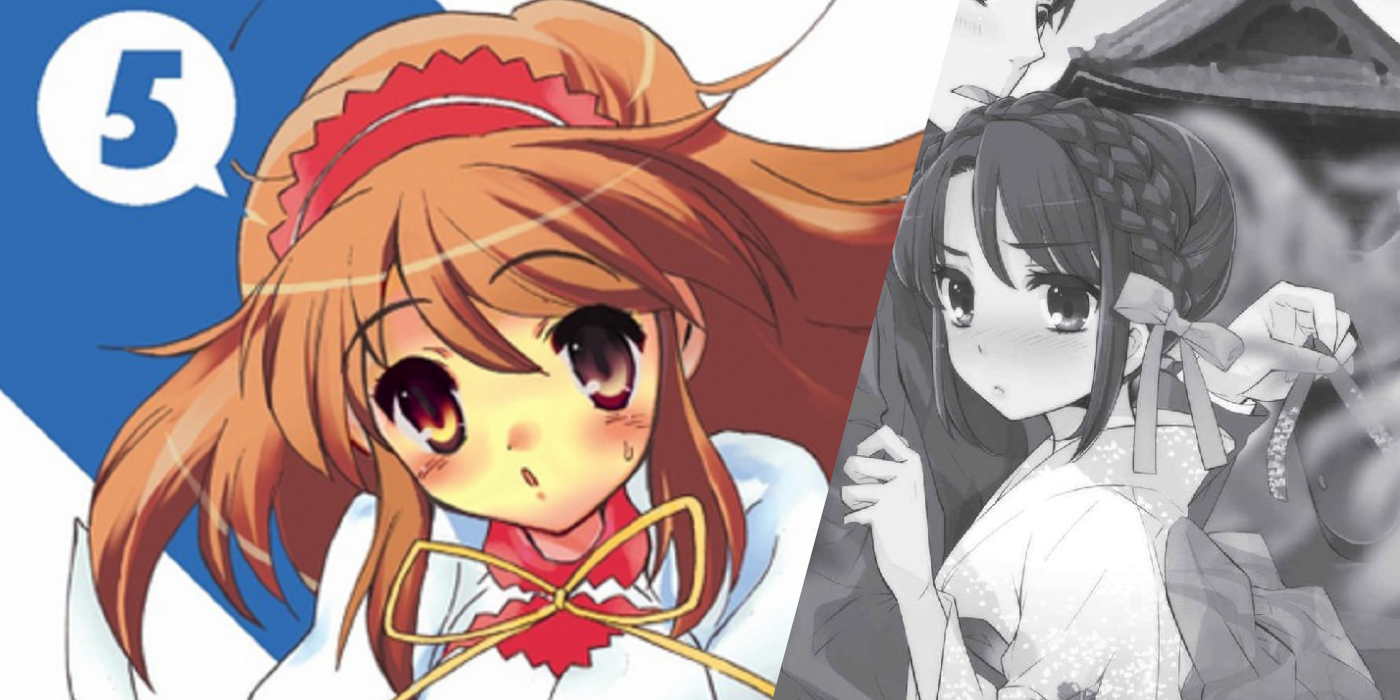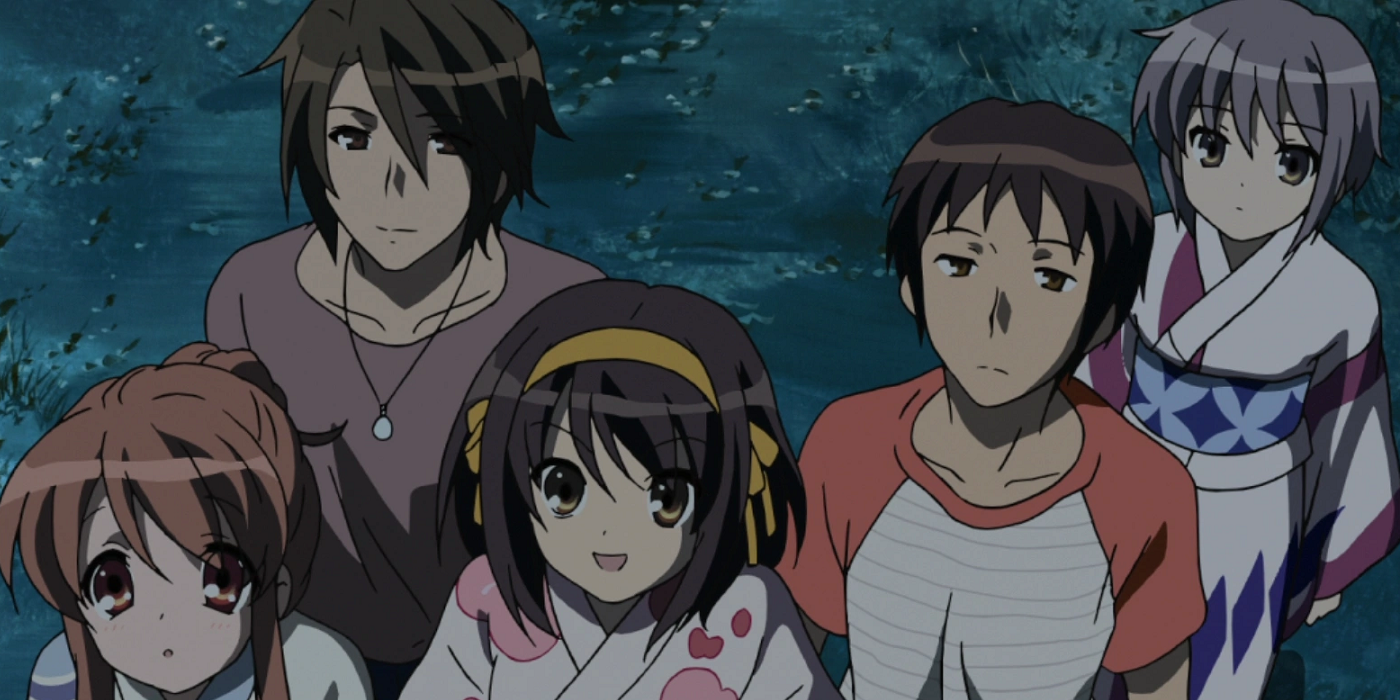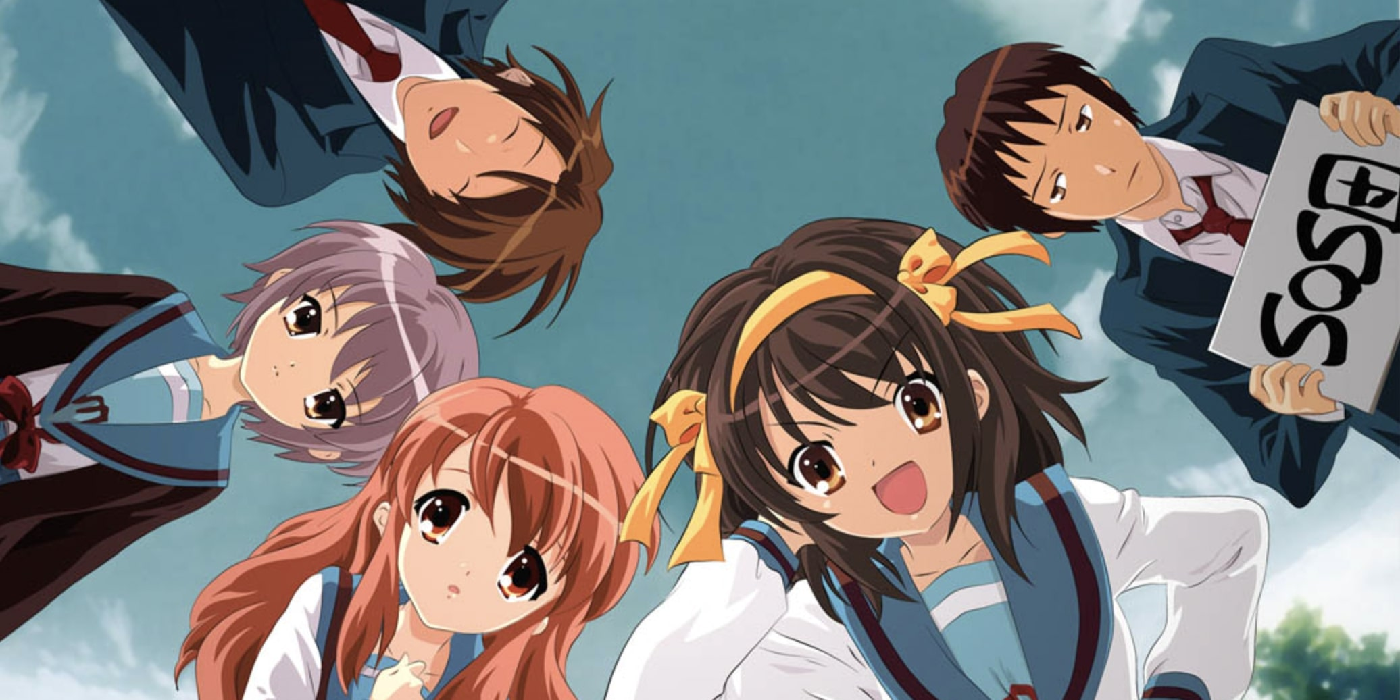One of the biggest fandoms of the late 2000s and early 2010s anime and manga scene, the Haruhi Suzumiya franchise has played a big role in shaping the culture of subsequent anime fandom. Originally starting out as a light novel series, Haruhi Suzumiya has since been adapted into a 12 volume manga, a 28 episode anime, several visual novel games, and more.
While the quirky sci-fi comedy continues to be loved by countless fans, one lengthy, controversial arc in the anime adaptation has continued to play an infamous role in anime discussion to this very day. Taking a look at the series' 'Endless Eight' arc, there's a lot to be said in terms of not only Haruhi's idiosyncratic style but the arc's relevance as a test of the limits of serialized TV storytelling and just how much fans are willing to put up with as well.
The ‘Endless Eight’ in the Original Light Novels
Haruhi Suzumiya’s first incarnation came in the form of light novels first published in Japan in 2003 and finding further success upon English localization in 2009. Written by Nagaru Tanigawa, the Haruhi Suzumiya novels are centered around a Japanese high schooler who must be continually entertained in order to stop her unawakened cosmic powers from altering the fabric of reality. Haruhi Suzumiya’s unique premise and endearing humor made it a favorite of Japanese readers and a staple of late 2000s-early 2010s anime fandom in North America.
Placed at the beginning of the fifth light novel volume, the ‘Endless Eight’ was originally a brief story centering around a two-week time-loop in which Haruhi unknowingly resets the last two weeks of summer vacation in a time loop that has gone on for over fifteen-thousand cycles. Haruhi’s classmates try to figure out why she subconsciously resets the last two weeks of summer, and they eventually uncover the simple, somewhat goofy explanation that Haruhi was slightly anxious about her friends not finishing their summer homework. For context, the fifth volume of the light novel series is only about 250 pages long, and the ‘Endless Eight’ plotline is only one of three vignettes inside it. A fun little side-story within the collection, but nothing too incredible in the wider scope of the franchise.
The Arc in the Anime Adaptation
The first season of the anime adaptation, The Melancholy of Haruhi Suzumiya, initially aired in Japan in 2006 to popular acclaim and interest for its peculiar, nonlinear episode chronology. The second season of the anime began its run in 2009, interspersed in weekly broadcasts alongside reruns from the first season. As the second season’s episodes began to air, fans were piqued to see that the ‘Endless Eight’ story from the light novel was chosen for adaptation in an episode. The days of summer occur, and the time loop is established, although the anime differs from the light novels in that the main character Kyon tries to finish his homework but fails to complete it before falling asleep.
The next week, fans tuned in to see “The Endless Eight II,” in which the timeloop is recreated with minor changes during the day, as Kyon develops a continuing sense of deja vu. The next week’s episode, “The Endless Eight III,” continued this trend. And the next week’s. And the next’s. And the plotline repeats on and on for eight full episodes until Kyon finally takes charge and demands that the group finish their summer homework, effectively breaking the timeloop.
Fan Reactions to the Arc, and Its Legacy in Modern Anime Culture
Taking a story titled the ‘endless eight’ and making it into eight distinct episodes is a novel concept, although potentially a bit tedious given its relative briefness in the original novels. Having those eight episodes be nearly-identical, with the characters seeming to slowly gain self-awareness of their situation only to have things reset, can understandably wear down patience. Eight near copycat episodes, released only once per week, in a show that already utilizes a complicated nonlinear continuity for episode broadcasts is perhaps nothing short of a recipe for disaster. Many fans were dismayed, angered, and most of all bored by the repetitive nature of these episodes dragging out for so long, seemingly to only reach a length of eight for the sake of matching the original story’s name as a gimmick.
Ask any Haruhi cosplayer at a convention in the following years about the episodes, and you probably would’ve gotten an earful. The length and repetition of these episodes was so daunting that they became somewhat of a meme within the fandom, inspiring countless images, warnings, and employment in fan works and videos. ‘Endless Eight’s storytelling style of repetition furthermore became a measuring stick for complex timeloops in anime and game fandom; many comparisons have been drawn between the episodes and a similar timeloop found in the second half of the 2012 Square Enix JRPG, Bravely Default. As recently as 2020, the episodes were recalled in a news post from Crunchyroll jokingly referring to the hiatus between Haruhi light novel volumes as “the endless wait.”
In many ways, the ‘Endless Eight’ arc was an interesting, albeit flawed experiment in a series that was already no stranger to playing around with time and order. It at once reveals the limitations of serialized weekly broadcasting to keep audiences engaged, but on the other hand, it was a genuine experiment in storytelling on the part of the animators and the arc’s writer, Yasuhiro Takemoto, who was later one of the victims of the tragic 2019 KyoAni arson attack. Even if it played with audiences in an unconventional way, the ‘Endless Eight’ remains a nostalgic staple of last decade’s anime fandom as well as a unique testament to the power of story pacing.




